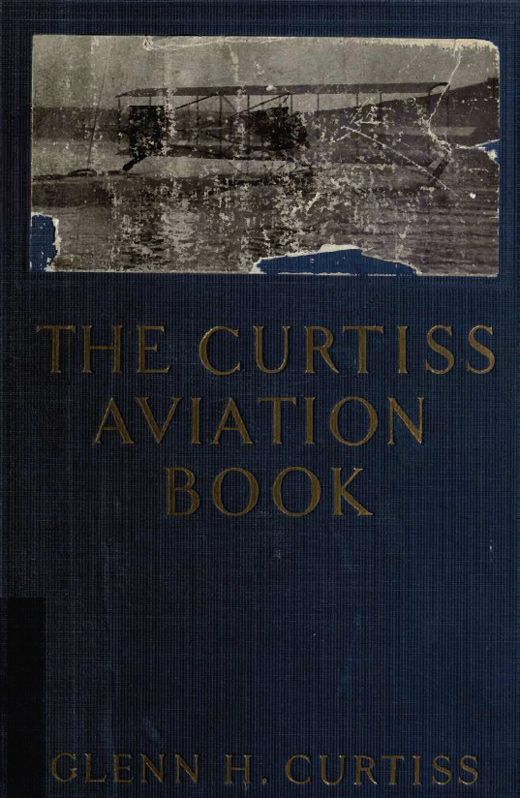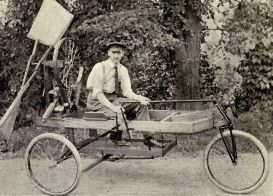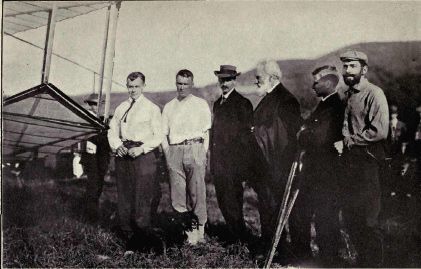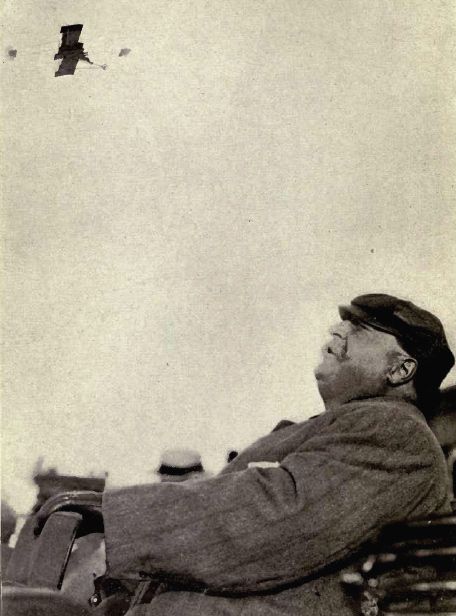Curtiss on Curtiss
The aviation pioneer chronicled his life and work in a once rare (but now freely downloadable) 1912 book.
/https://tf-cmsv2-smithsonianmag-media.s3.amazonaws.com/filer/curtissbook-cover-631-mar08.jpg)
Load the paper in the printer and download The Curtiss Aviation Book, an exceedingly rare autobiography written in 1912 by aviation pioneer Glenn Curtiss (see Augustus Post, P.W. Beck, and Hugh Robinson. Once found only in used book shops, the entire text with photos is now freely available as a PDF (Adobe Acrobat) download from the inestimable Internet Archive (http://www.archive.org). The drawings are detailed enough that you can build your own Curtiss aircraft.
The tone of the text is lively, even poetic at times, as these excerpts show:
"All the members of the Aerial Experiment Association were in Hammondsport at the time, including Dr. Alexander Graham Bell. We had established an office in the annex which had been built on the Curtiss homestead, and here took place nightly discussions on the work of the day past and the plans for the day to follow. Some of the boys named the office the "thinkorium…. A favorite subject of talk at the thinkorium, at least between McCurdy and Selfridge, was on some of the effects of the "torque" of a propeller and whenever this arose we would expect the argument to keep up until one or the other would fall asleep."
"Dr. Bell had a strong aversion to the ringing of the telephone bell, the great invention for which he is responsible. I occasionally went into his room and found the bell stuffed with paper, or wound around with towels. 'Little did I think when I invented this thing,’ said Dr. Bell, one day when he had been awakened by the jingling of the bell, 'that it would rise up to mock and annoy me.’ " (Today’s cell phone ring tones would surely send Bell spinning in his grave at high RPM).
"Flying an aeroplane is a thrilling sport, but flying a hydroaeroplane is something to arouse the jaded senses of the most blasé. It fascinates, exhilarates, vivifies. It is like a yacht with horizontal sails that support it on the breezes. To see it skim the water like a swooping gull and then rise high into the air, circle and soar to great heights, and finally drop gracefully down upon the water again, furnishes a thrill and inspires a wonder that does not come with any other sport on earth."
"It is practically impossible for the operator of a hydroaeroplane to suffer injury in case of accident. Even in the worst kind of an accident, the most that can happen to the operator is an exhilarating plunge into salt- or freshwater as the case may be, with the beneficial effects of a good swim if so desired, otherwise, the operator may "stand by" the wreckage, which cannot possibly sink. The several pontoons, together with the necessary woodwork to construct the planes, etc., furnish ample buoyancy to support the machine and operator even in the case of a total wreck, which rarely ever happens. One can bang down upon the water with a hydro in any old fashion, and beyond a tremendous splash nothing serious happens."
"Actors and men with a keen sense of feeling seem to do well in the air. They seem to get the 'feel of the air,’ or to have the delicate sense of touch which is required to handle an aeroplane among the illusive vagaries of the atmosphere, and be able to sense its rapid action and feel its ever-changing conditions almost before they take effect. One must be absolutely en rapport with his machine, as an expert horseman is part of his horse or his horse is part of him; such a rider stands out from all the rest, a beautiful sight and an expression of the poetry of motion; such also is the manner of the master at the piano, whose very soul is in tune and vibrating with every subtle and rich harmony of the instrument, feeling at the same time the ever-changing mood of his audience as he sways them or is swayed by them in turn, keeping in close sympathy with their thoughts as well as suggesting to their minds the trend that they shall take."
Whoa! E-e-e-easy there, big fella.



